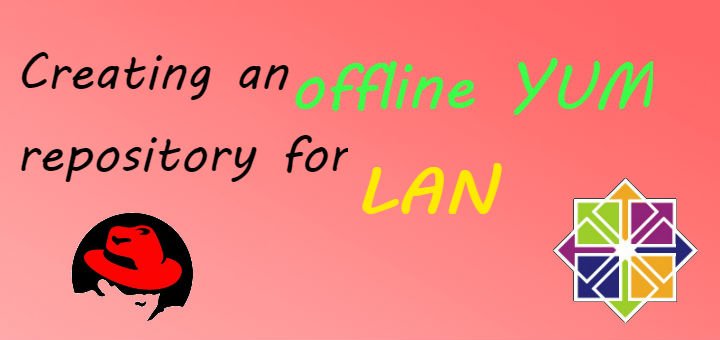In our earlier tutorial, we discussed “How we can create our own yum repository with ISO image & by mirroring an online yum repository”. For this tutorial, we will discuss how to create an offline Yum Repository in CentOS or RHEL servers.
Creating your own yum repository is a good idea but not ideal if you are only using 2-3 Linux machines on your network. But it definitely has advantages when you have a large number of Linux servers on your network that are updated regularly or when you have some sensitive Linux machines that can’t be exposed to the Internet directly.
When we have a large number of Linux systems & each system is updating directly from the internet, the data consumed will be enormous. In order to save the data, we can create an offline yum & share it over our Local network. Other Linux machines on the network will then fetch system updates directly from this Local yum, thus saving data & also transfer speed also be very good since we will be on our local network.
We can share our yum repository using any of the following or both methods:
- Using Web Server (Apache)
- Using ftp (VSFTPD)
We will be discussing both of these methods but before we start, you should create a YUM repository using my earlier tutorial (READ HERE)
Using Web Server
Firstly we need to install a web-server (Apache) on our yum server which has an IP address 192.168.1.100. Since we have already configured a yum repository for this system, we will install an apache web server using the yum command,
$ yum install httpd
Next, we need to copy all the rpm packages to the default apache root directory i.e. /var/www/html or since we have already copied our packages to /YUM, we can create a symbolic link from /var/www/html to /YUM
$ ln –s /var/www/html/Centos /yum
Restart your web-server to implement changes
$ systemctl restart httpd
Configuring client machine
Configurations for sharing Yum repository on the server side are complete & now we will configure our client machine, with an IP address 192.168.1.101, to receive updates from our created offline yum.
Create a file named offline-yum.repo in /etc/yum.repos.d folder & enter the following details,
$ vi /etc/yum.repos.d/offline-yum.repo
[Offline YUM]
name=Local YUM
baseurl=http://192.168.1.100/CentOS/7
gpgcheck=0
enabled=1
We have configured your Linux machine to receive updates over LAN from your offline yum repository. To confirm if the repository is working fine, try to install/update packages using yum command.
Using FTP server
For sharing our YUM over ftp, we will first install the required package i.e vsftpd
$ yum install vsftpd
Default root directory for vsftp is /var/ftp/pub, so either copy rpm packages to this folder or create a symbolic link from /var/ftp/pub,
$ ln –s /var/ftp/pub /YUM
Now, restart server for implement the changes
$ systemctl restart vsftpd
Configuring client machine
We will now create a file named offline-yum.repo in /etc/yum.repos.d , as we did above & enter the following details,
$ vi /etc/yum.repos.d/offline-yum.repo
[Offline YUM]
name=Local YUM
baseurl=ftp://192.168.1.100/pub/CentOS/7
gpgcheck=0
enabled=1
Your client machine is now ready to receive updates over ftp. For configuring the vsftpd server to share files with other Linux systems, read the tutorial here.
Both methods for sharing an offline yum over LAN are good & you can choose either of them, both of these methods should work fine. This completes our tutorial on how to create an Offline Yum Repository in CentOS. If you are having any queries/comments, please share them in the comment box down below.
